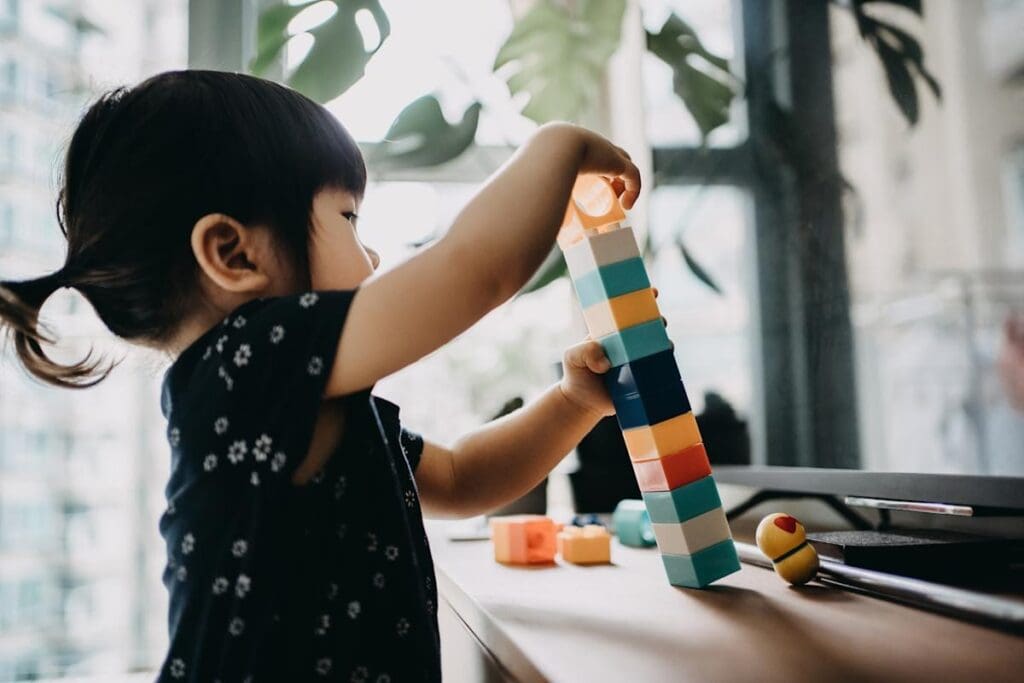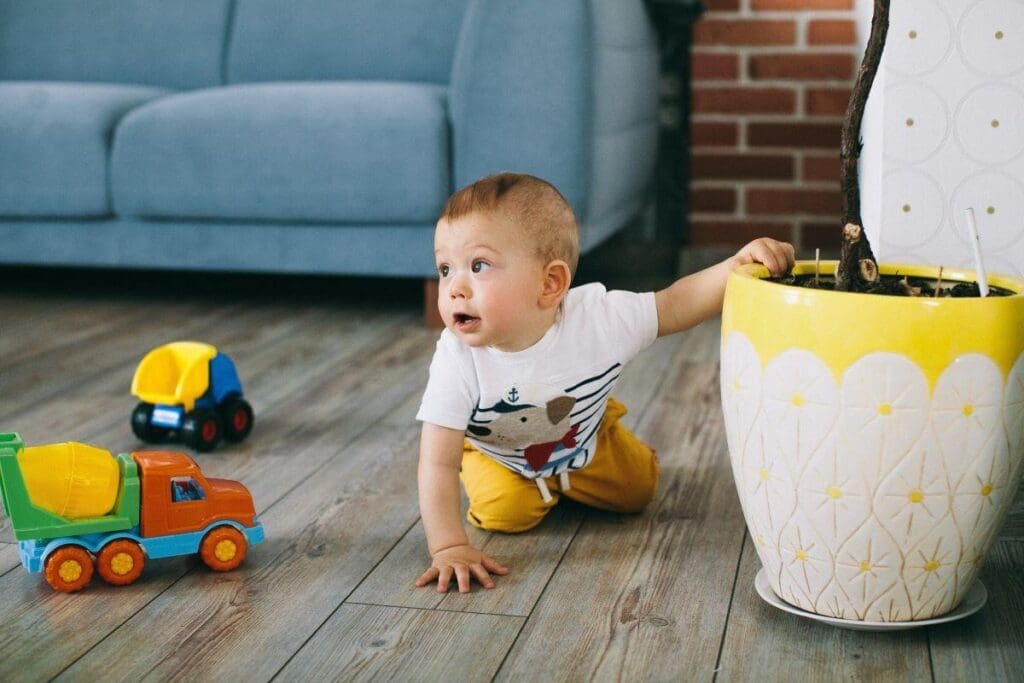Last Updated on November 17, 2025 by
Many parents worry about developmental delays. It’s important to know when they are usually found. Early childhood is a key time to spot these issues. Finding them early can greatly help a child’s health and future.

The CDC says kids should hit certain milestones by two years old. These include skills in thinking, socializing, feeling, acting, and speaking. Pediatricians keep an eye on these during check-ups. The American Academy of Pediatrics suggests screenings at 9, 18, and 30 months to catch delays early.
Knowing when developmental delays are spotted is key for early help. The time from 18 months to 3 years is very important for finding these delays.
Children hit big milestones between 18 months and 3 years. Doctors watch closely for any signs of delay in speech, movement, and social skills. The Centers for Disease Control and Prevention (CDC) has guidelines to help spot developmental delays early.

The ages from 18 months to 3 years are vital. It’s a time of fast growth and development. Spotting global developmental delays early is important for helping a child’s future.
While 18 months to 3 years is key, some signs of delay can show up sooner. For example, not babbling or gesturing by 12 months is a warning sign. Parents and caregivers should watch for these signs and talk to their doctor if they’re worried. The CDC says knowing these milestones and talking to a doctor can lead to early help for developmental delay ICD10.
“Early identification and intervention can make a significant difference in the lives of children with developmental delays.”
By knowing when to look for developmental delays and spotting early signs, parents and caregivers can help their child get the support they need.
It’s important to know about different developmental delays early. This helps in getting the right help fast. Delays can happen in one area or many.
Common Types of Developmental Delays
Speech and language delays are common. They are often spotted between 12-24 months. Kids with these delays may find it hard to talk and connect with others.
Motor skills delays can start as early as 9-18 months. They affect a child’s ability to do physical things like crawling or using their hands.
Social and emotional delays are seen between 18-36 months. They can make it hard for kids to make friends and handle their feelings.
Cognitive delays are noticed between 24-36 months. They impact a child’s thinking, memory, and learning new things.

Spotting and acting on these delays early is key. Knowing about them helps parents and caregivers support their kids fully. This way, kids can reach their highest abilities.
The American Academy of Pediatrics has set a specific schedule for developmental screenings. This schedule aims to spot developmental issues early on. It’s designed to catch problems at key times in a child’s growth.
At 9 months, the first screening looks at developmental milestones. It checks physical and cognitive development. This early check helps spot any delays in development.
The 18-month assessment is detailed. It looks at physical, cognitive, language, and social skills. It’s a key time to see if a child is on track or not.
Between 24 and 30 months, a follow-up screening checks on progress. This stage is important for seeing how developmental skills are coming along.
If there are worries about a child’s development, more screenings can be done. This approach makes sure any global delay or other issues are caught and dealt with quickly.
Following this schedule helps pediatricians and parents work together. They can spot and fix developmental delays early. This ensures the best start for children.
It’s key to know how common developmental delays are to help kids early. These delays hit a big chunk of kids around the world. The rates vary a lot based on where you are and your family’s income.
In the U.S., about 10-15% of preschoolers face developmental delays. This shows why early checks and help are so vital.
Looking at kids aged 3-17, around 17% have developmental or behavioural disabilities. This shows we need to keep supporting kids as they grow.
Worldwide, the rate of developmental delays swings from 1-3% in some areas. What affects this rate includes healthcare access, money status, and culture.
Low and middle-income countries see more developmental delays. This is due to less healthcare, poor nutrition, and economic struggles.
The CDC says about 1 in 6 U.S. kids have a developmental delay or disability. This fact stresses the need for early help and support for these kids.
The high number of developmental delays shows we must work together globally and locally. Understanding this issue helps us focus on helping kids who need it most.
Some signs show a child might be delayed in development. Parents and caregivers need to watch for these signs. This ensures they get help early.
By 12 months, kids usually start babbling and use gestures like pointing. A lack of these behaviours could be an early indicator of a developmental delay.
Most kids say their first words by 16 months. If a child is not using single words by then, it may signal a speech or language delay.
By 24 months, kids usually start combining words to form simple phrases. Not using two-word phrases by 24 months is a red flag that warrants further assessment.
Losing skills that were previously acquired is a significant concern at any age. This regression could indicate a developmental issue that needs immediate attention.
Knowing these warning signs helps parents and caregivers seek professional help early. Early intervention is key to addressing developmental delays effectively.
If you notice any of these signs, consult with a healthcare professional. They can assess the child’s development and guide the next steps.
The timing of when we start helping children with delays matters a lot. Studies show early help can greatly improve their future. This is true for kids with developmental delays.
Starting early can lead to better long-term developmental results. Early help lets kids learn skills that help them all their lives.
Kids who get help early do better in school. This is because early help builds a strong base in many areas.
Early intervention means less need for intense help later. This helps the child and saves money for families and society.
Early help also helps families deal with developmental delays. It gives families the support and tools they need to care for a child with a global delay.
In short, early intervention is key in managing developmental delays. It’s important for parents and caregivers to know the signs and get help quickly. This ensures the best future for their children.
Getting a developmental delay diagnosis can be tough for families. But knowing the key ages for diagnosis and the value of early help can change a child’s path. The American Academy of Pediatrics’ guidelines suggest checking kids for general development at 9, 18, and 24 or 30 months. They also recommend extra checks for autism at 18 and 24 months.
Liv Hospital aims to offer top-notch, ethical care that meets global standards. Working with doctors and getting therapy can help kids do their best. Finding developmental delays early means kids can get help sooner, leading to better long-term results.
After a developmental delay diagnosis, families should act fast. This can boost a child’s school readiness, grades, and happiness. A developmental delay diagnosis doesn’t mean a child’s future is set. With the right support and help, kids can make big strides in their growth.
Doctors usually spot developmental delays between 18 months and 3 years. This is when kids hit big milestones.
There are several types of developmental delays. These include speech and language issues, motor skill problems, social and emotional delays, and cognitive delays.
The American Academy of Pediatrics suggests screenings at 9 months, 18 months, and between 24-30 months. This helps catch delays early.
Look out for signs like not babbling or gesturing by 12 months. Also, not saying single words by 16 months, or not making two-word phrases by 24 months. Losing skills you once had is another warning sign.
About 10-15% of preschoolers in the U.S. face developmental delays. In some areas, rates are as low as 1-3%. But in low- and middle-income countries, rates are much higher.
Early help can greatly improve a child’s development. It makes them ready for school and helps with learning. It also means they might not need as much help later on.
If you’re worried, talk to your child’s doctor right away. Don’t wait for the next screening.
The 18 months to 3 years is key for spotting delays. It’s when kids are expected to reach big milestones. Doctors watch closely during this time.
Yes, you might see early signs before 18 months. For example, not babbling or gesturing by 12 months is a sign.
Subscribe to our e-newsletter to stay informed about the latest innovations in the world of health and exclusive offers!